The Barber Vintage Motorsports Museum Part 5 – With Phil Aynsley
Part five of a tour through the Barber Museum – English and American bikes
Back to Part 1 – Back to Part 2 – Back to Part 3 – Back to Part 4
More from the Barber Museum focusing on English and American bikes.
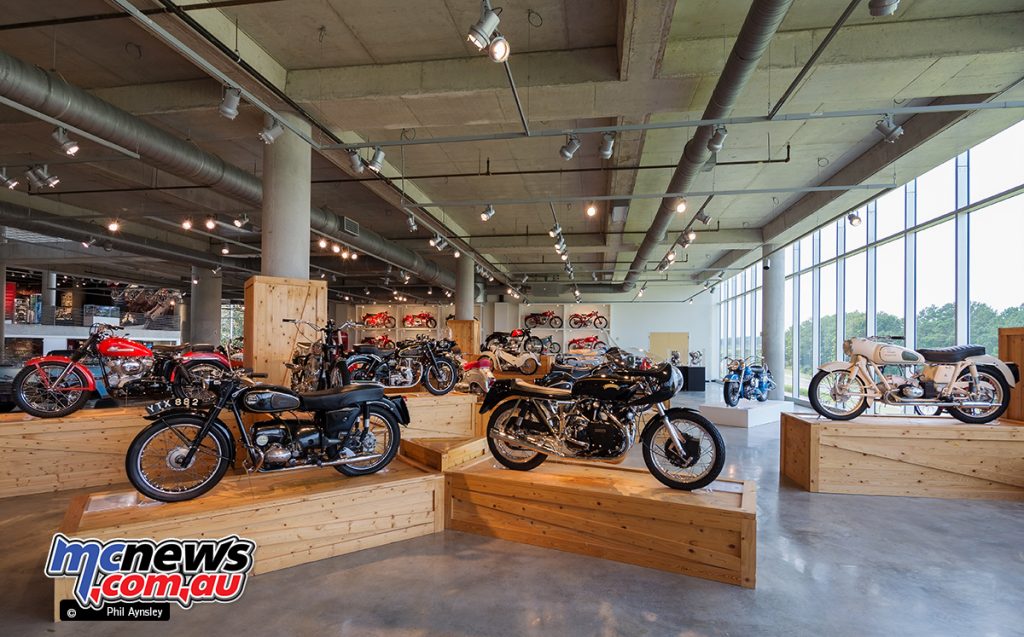
Spread over several floors are more “diffuse” themed collections such as ‘the ‘60s’. I’m showing them here based on country of origin.
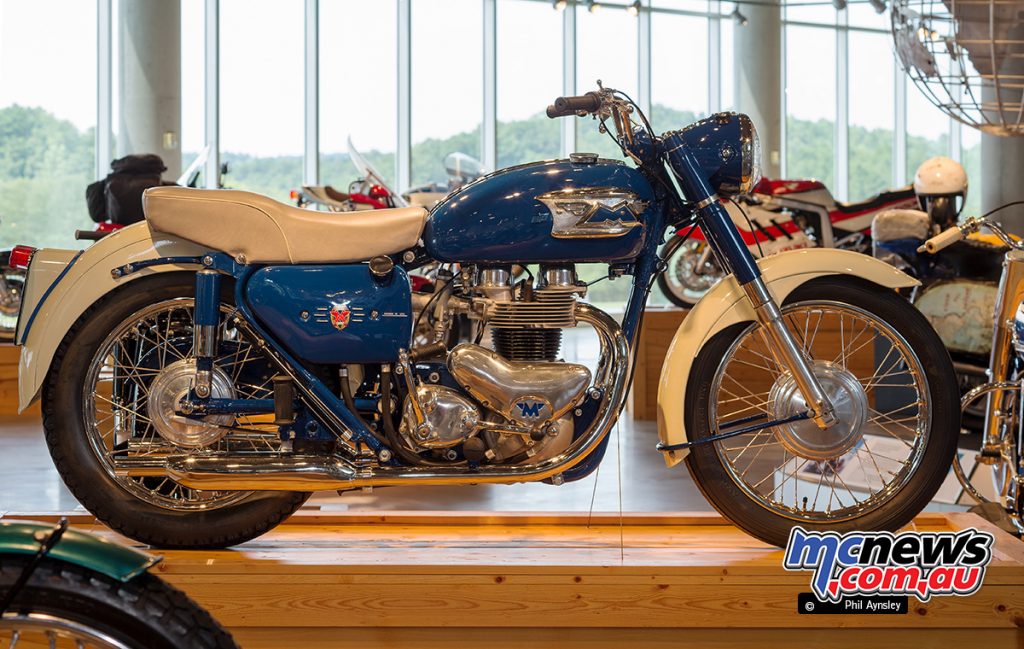
Matchless G9 twin.
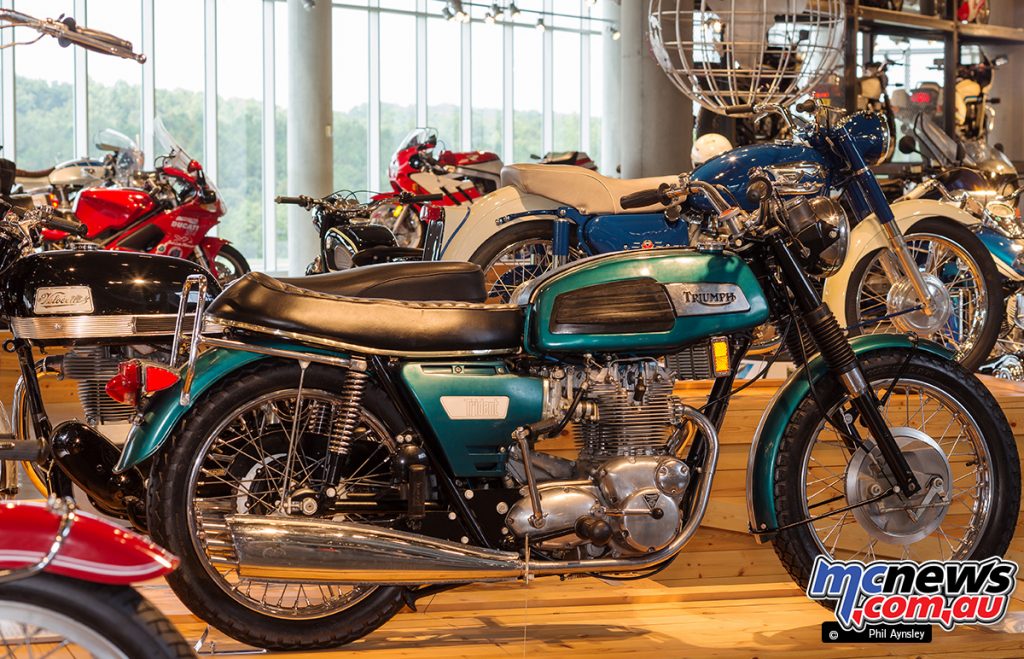
1969 Triumph 750 Trident T150. The first model with Ogle Design “square tank”, “ray-gun” mufflers and drum front brake.
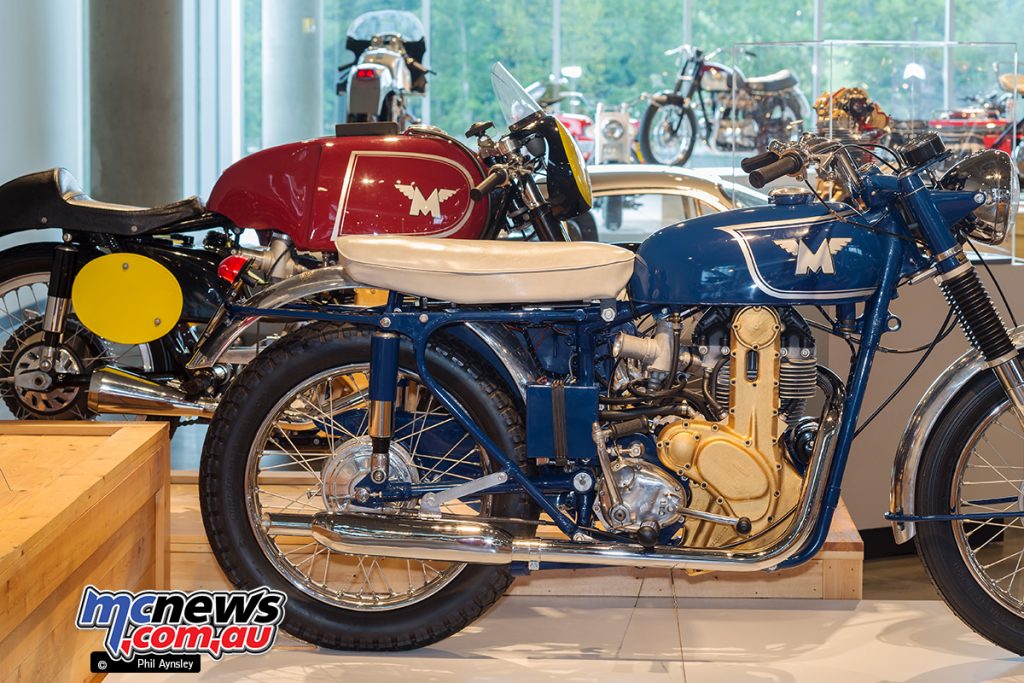
1962 Matchless G-50 CSR. Built as a homolgation special to get around AMA regulations, the CSR was simply the motor from the G-50 race bike fitted into a street chassis. 25 were built.

1975 Norton 850 Commando Mk3.
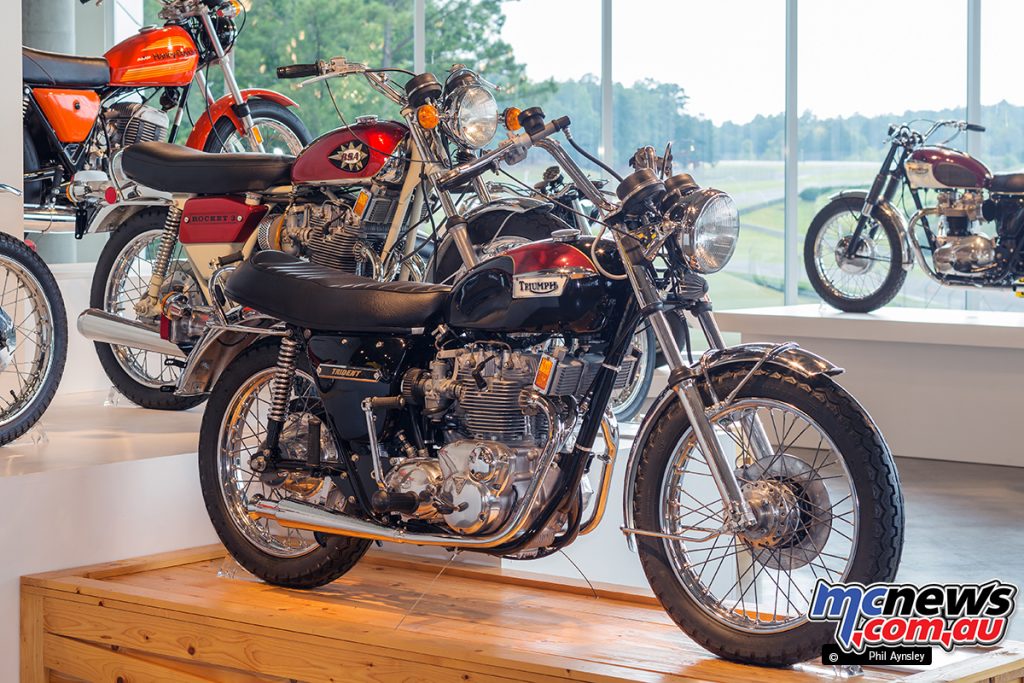

Early ‘70s Triumph Trident T150 and BSA Rocket 3.

1965 Royal Enfield 250 Continental GT.
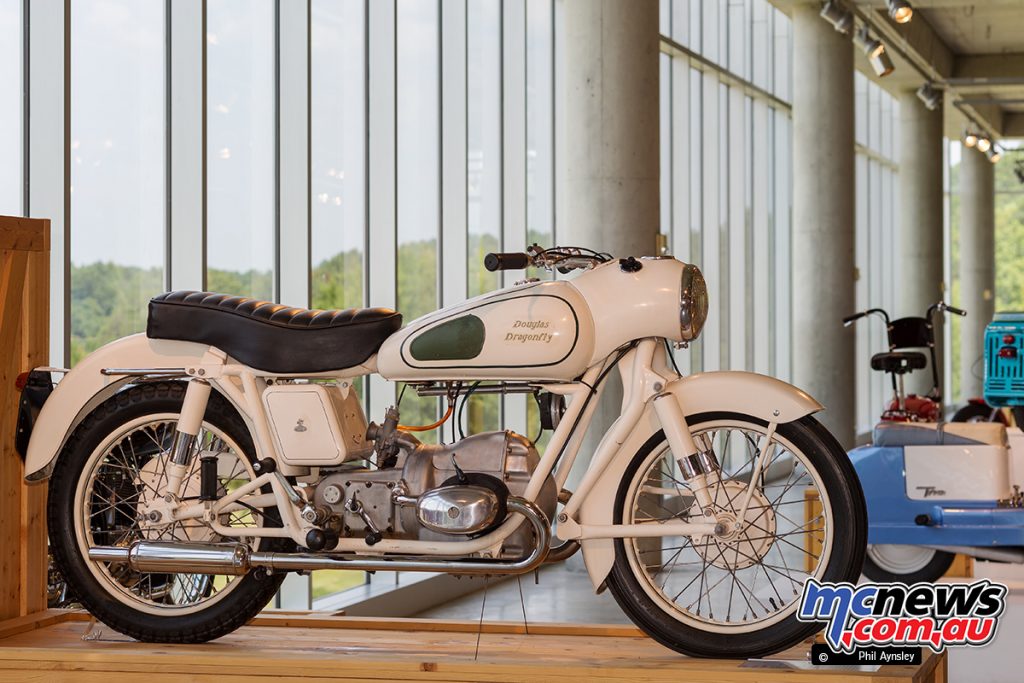
1957 Douglas Dragonfly 350.

1951 Triumph Twenty One

1923 Scott Sprint Special

Possibly the first factory “custom” special was the 1972-3 Triumph X-75 Hurricane. In 1969 the American BSA-Triumph management commissioned Craig Vetter to make the BSA A75 “sleeker and more balanced”.
The resultant bike was sent to the UK the following year, just in time for BSA’s demise. Initially not impressed, the UK management then realised they could now use the many BSA Rocket 3 spare parts on hand. In 1972 the bike entered limited production as the Triumph Hurricane with 1200 constructed, power was 58hp at 7,250rpm.
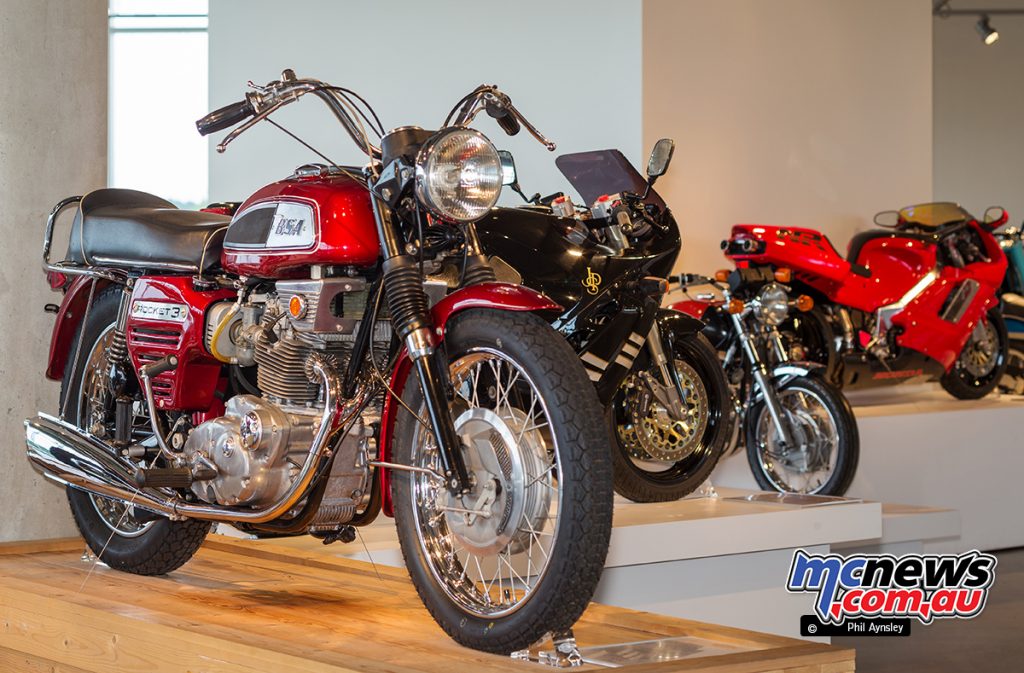
1969 BSA 750 Rocket 3.
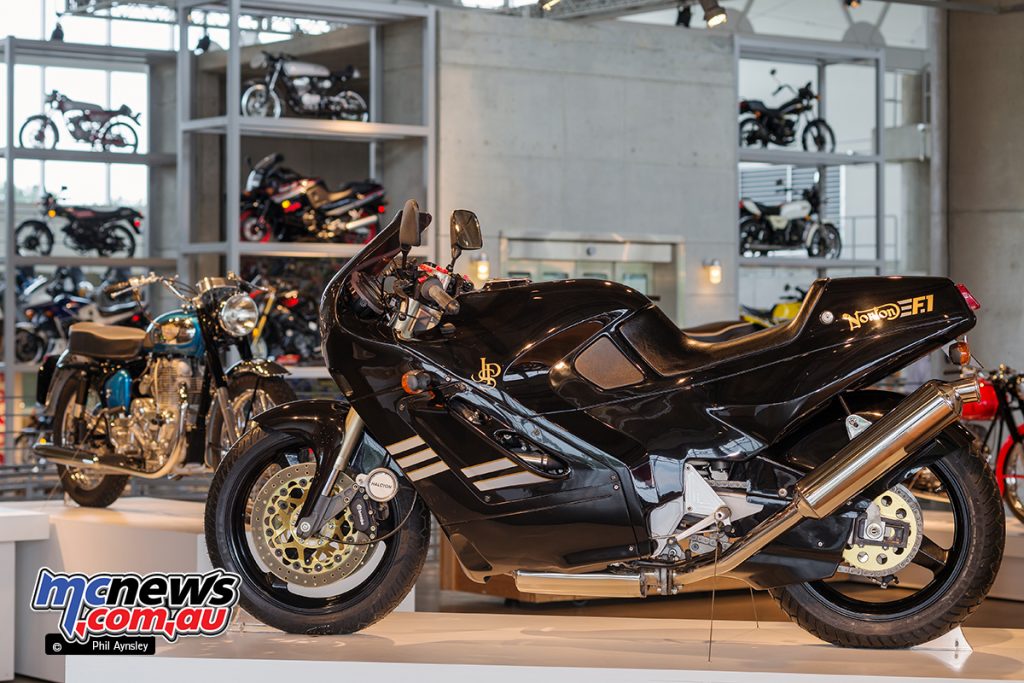
1990 Norton F1.

1982 Hesketh V 1000.
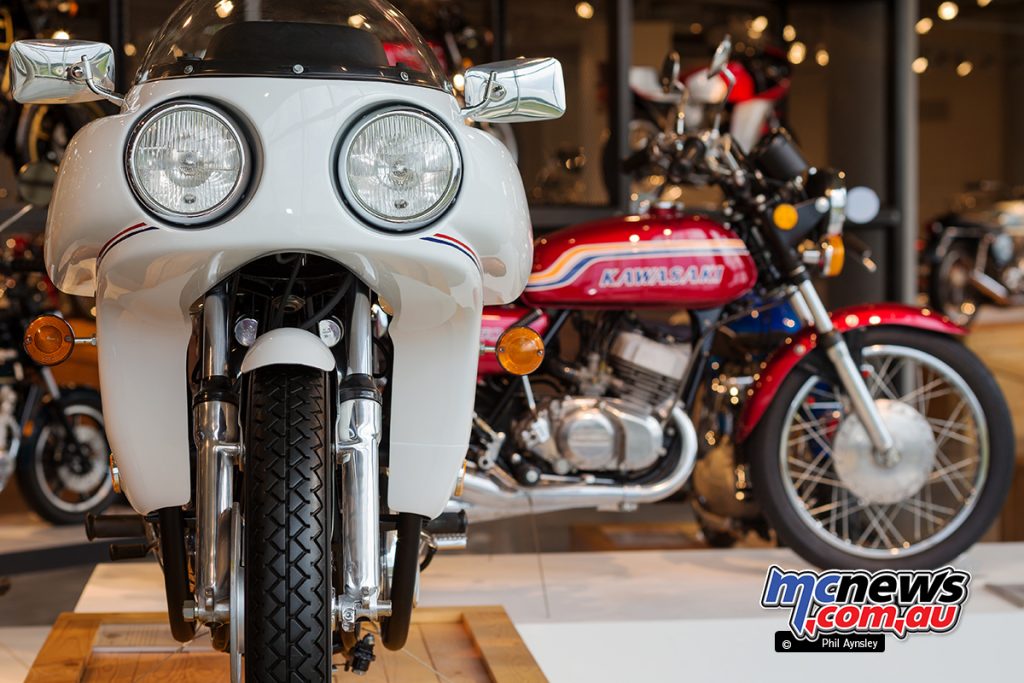
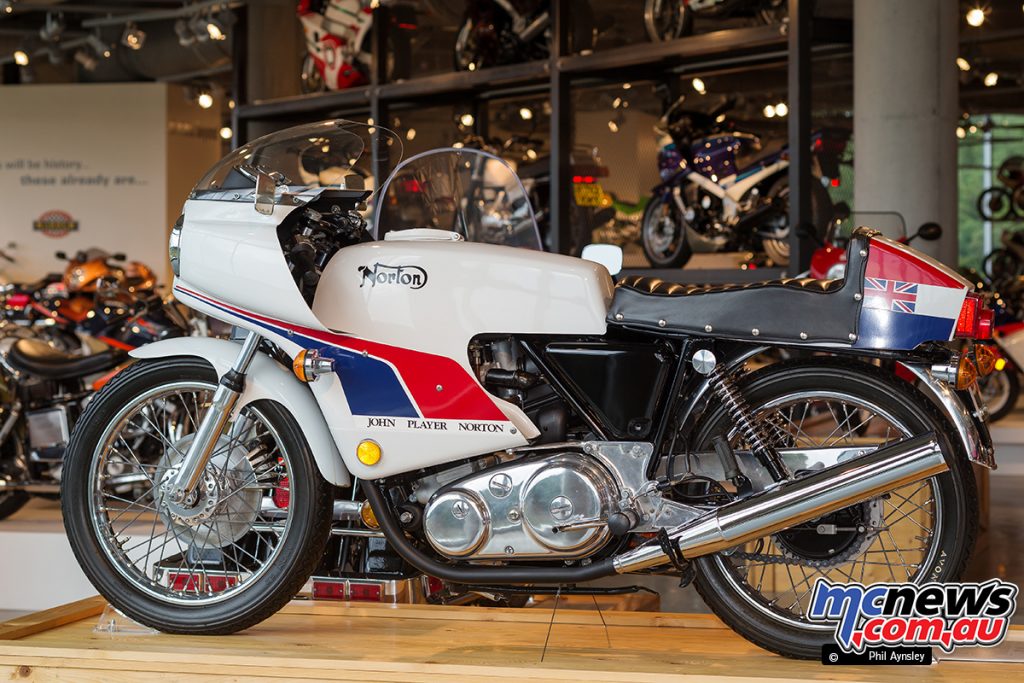
1974 Norton Commando 850 JPS.
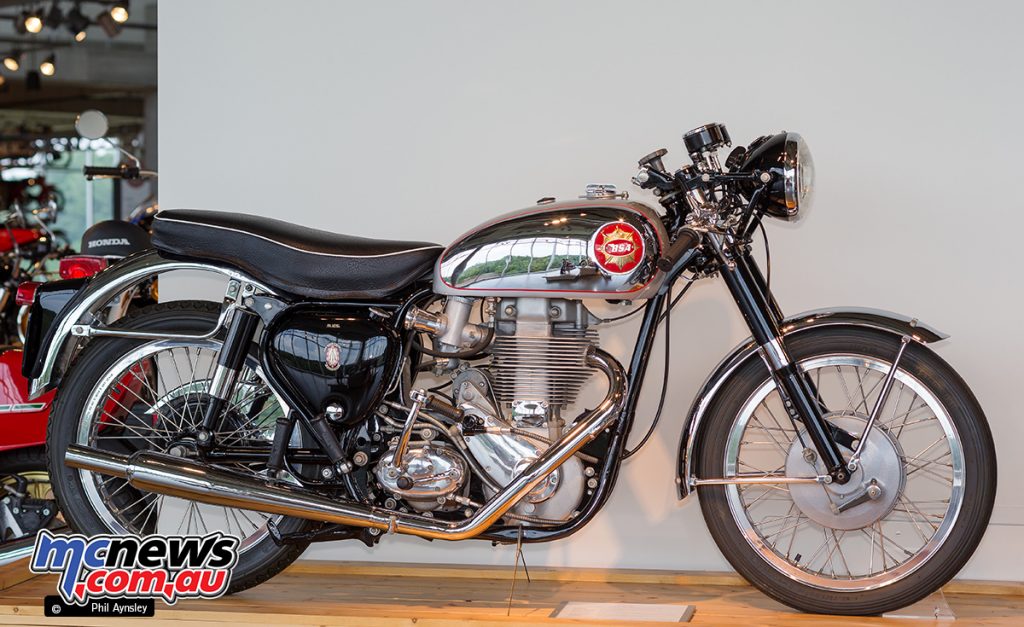
1960 BSA Gold Star Clubman’s.
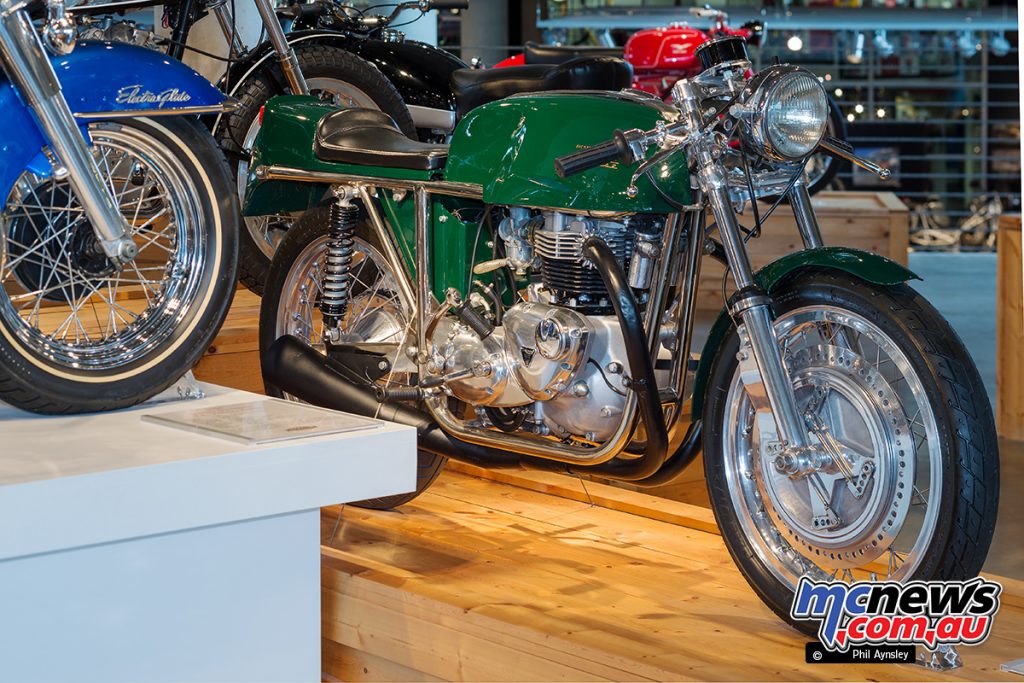
1977 Dresda Triumph.
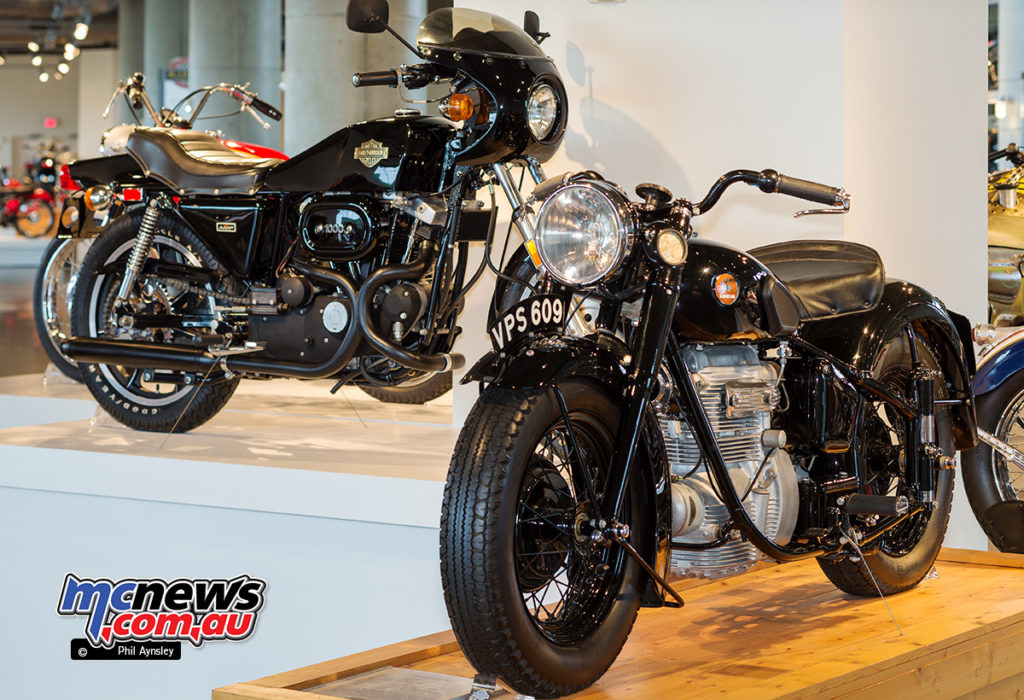
1947 Sunbeam S7, 1977 Harley Davidson XLCR.
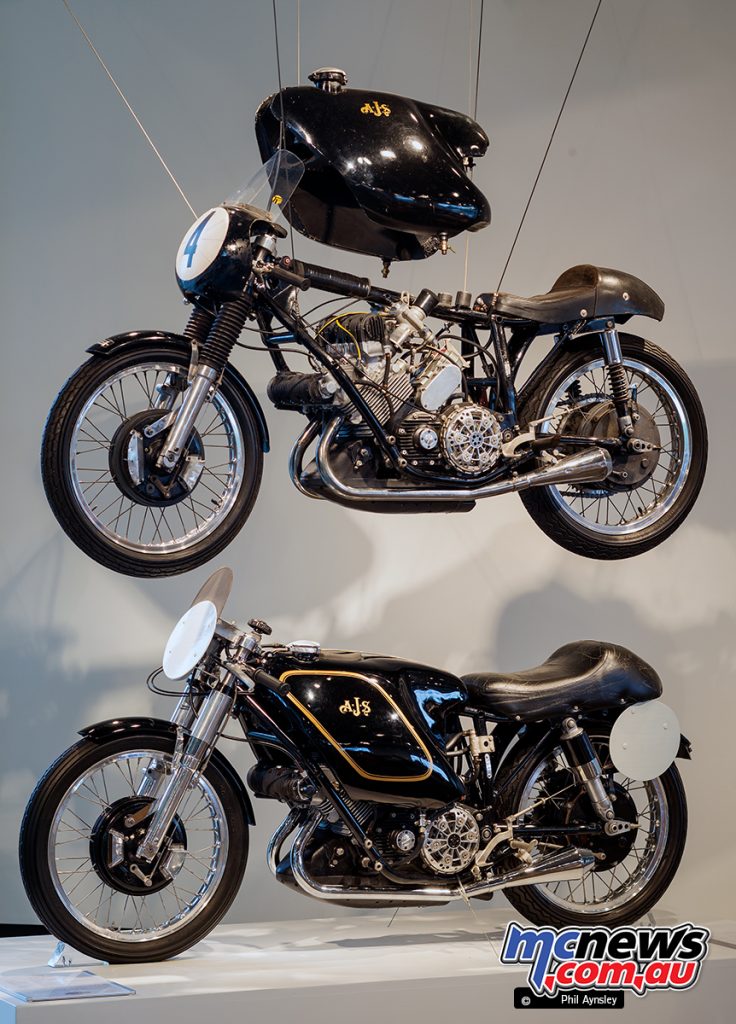
It is generally accepted that only four AJS E95s were built back in the early 1950s. You can see half of them here! The E95 was derived from the E90S, a 1946 500cc parallel twin design that featured water-cooling and a supercharger.
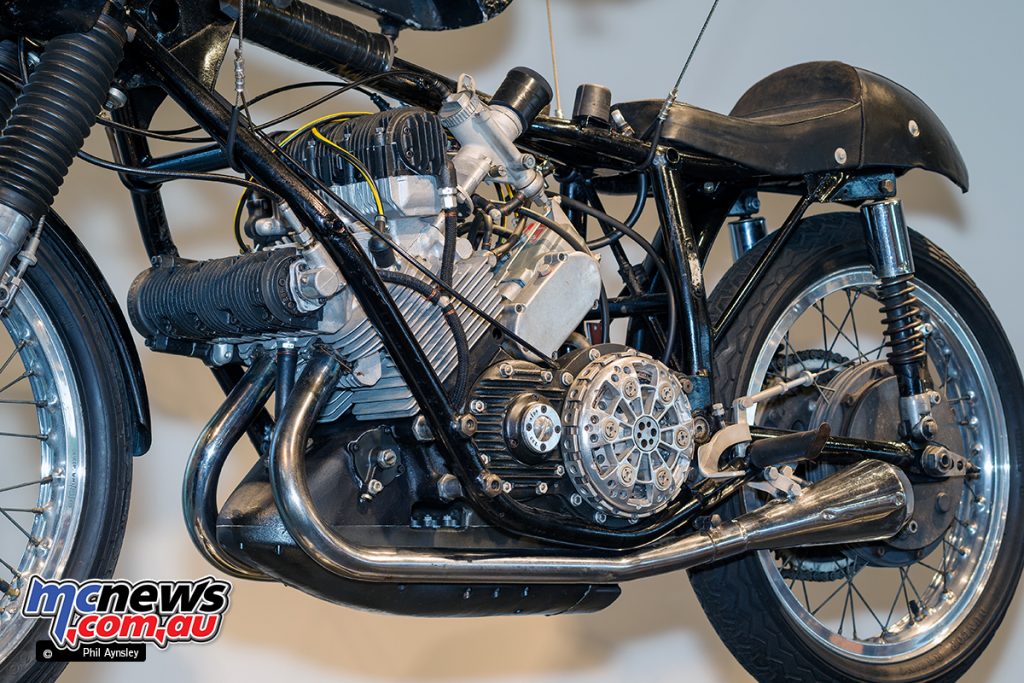
With the banning of forced induction, the bike (now the E90) lost the supercharger and became air-cooled – with the unusual spiked fins on the cylinder heads resulting in the famous “Porcupine” name.
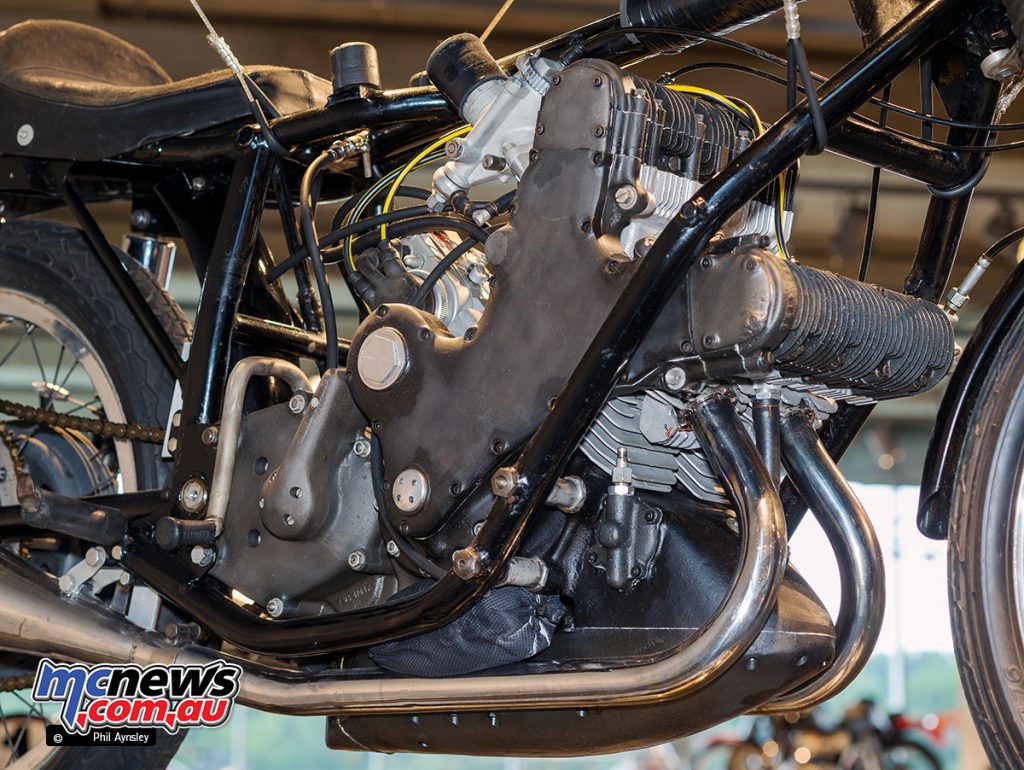
The E90 was raced from 1947 until it was replaced by the much revised E95 in 1952, on the way becoming the only twin to win the 500cc world championship (in its inaugural year, 1949). The E95’s cylinders were inclined at 45 degrees and a new frame was used but apart from a single victory at its first race in the Swiss GP in 1952, no wins were recorded in ’52-3.
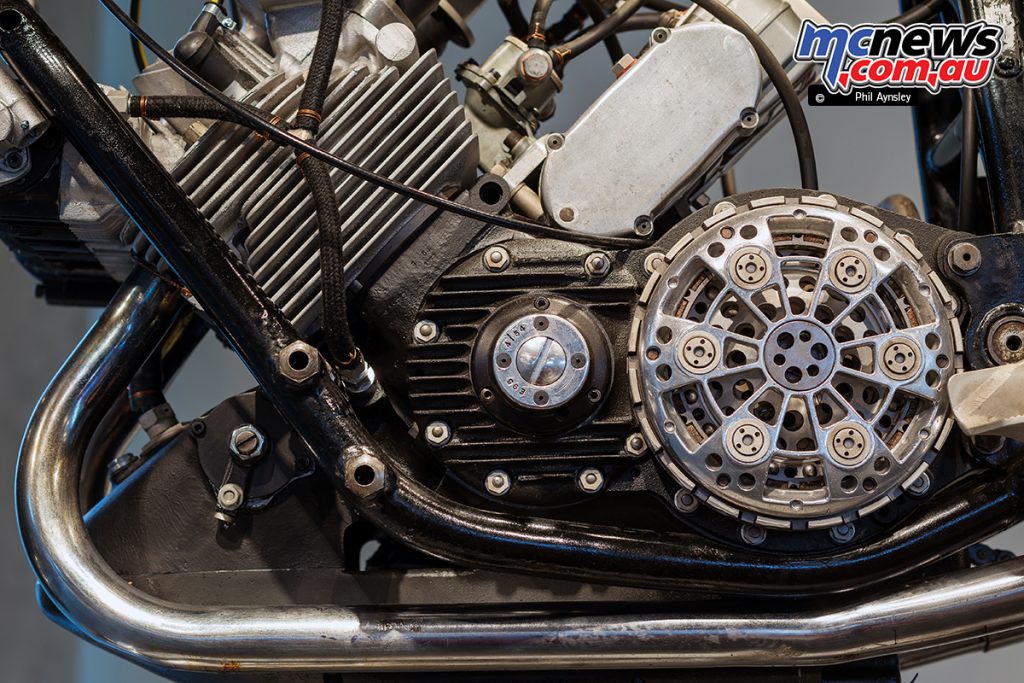
In 1954 a final revamp brought another, lower frame, a new fuel system to replace the troubled original design and the distinctive pannier-style fuel tank. However continuing unreliability resulted in AJS quitting Grand Prix altogether at the end of the season. 54hp at 7,800rpm (est), was matched to a dry weight of 152kg, and top speed of 230km/h (IoM, 1964).
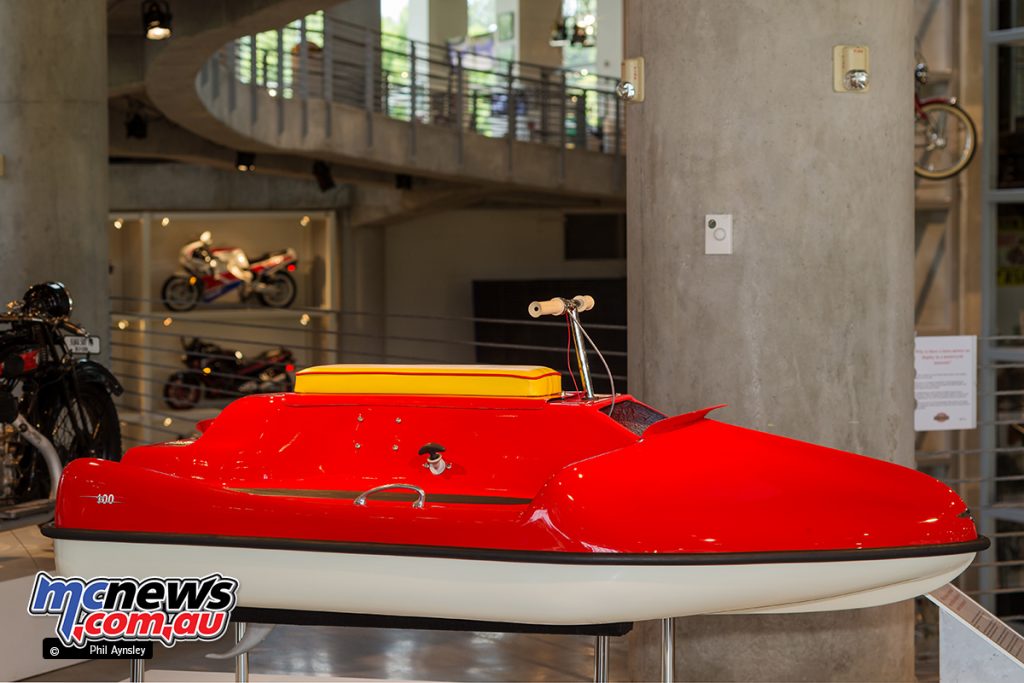
1957 Vincent Amanda water scooter. Originally powered by Vincent made 75 and 100cc two-stroke singles, a 200cc twin was later produced. This fibreglass person water craft was well ahead of its time but only some 2000 were sold up until 1959. The 75cc version had a top speed of 8km/h, the 100cc 11kph and the 200cc about 30km/h.
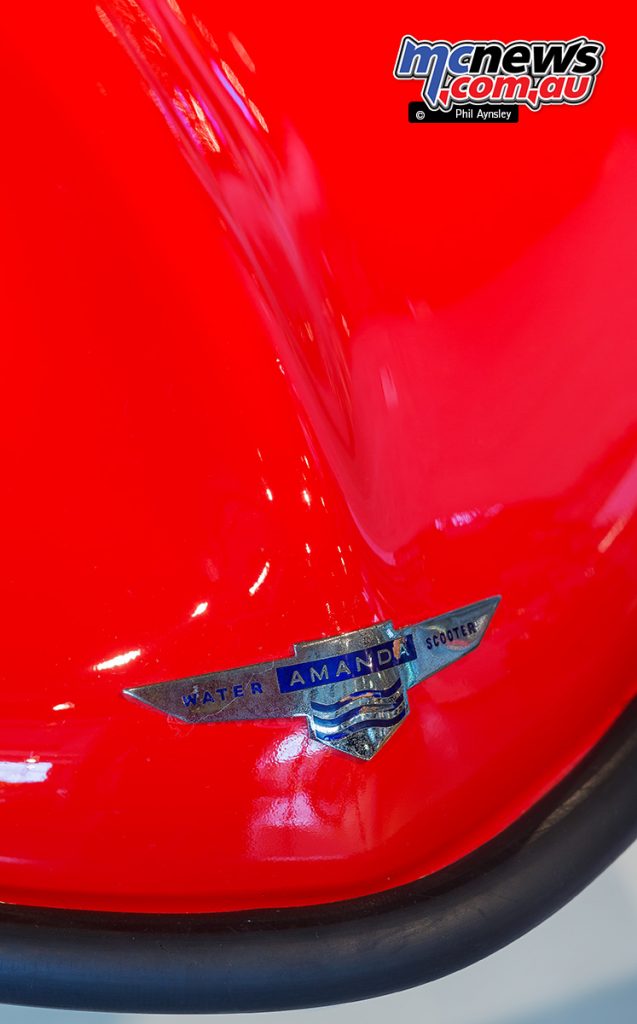
While the two smaller models were fairly problem free the twin output considerably more engine/exhaust heat than anticipated which caused the surrounding fibreglass hull to loose its structural strength!
This was rectified but the unfortunate drowning of a Vincent engineer while testing an Amanda, together with the entire sales team from Aero Marine (the company that came to Vincent with the original concept) being killed in a plane crash proved to be blows that the project didn’t recover from.
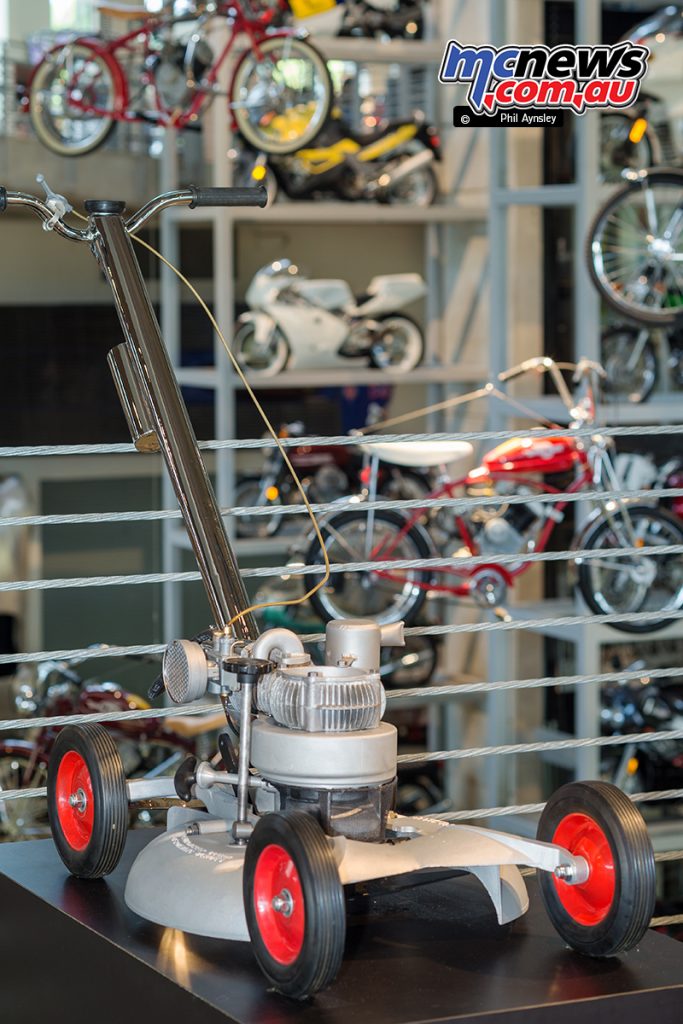
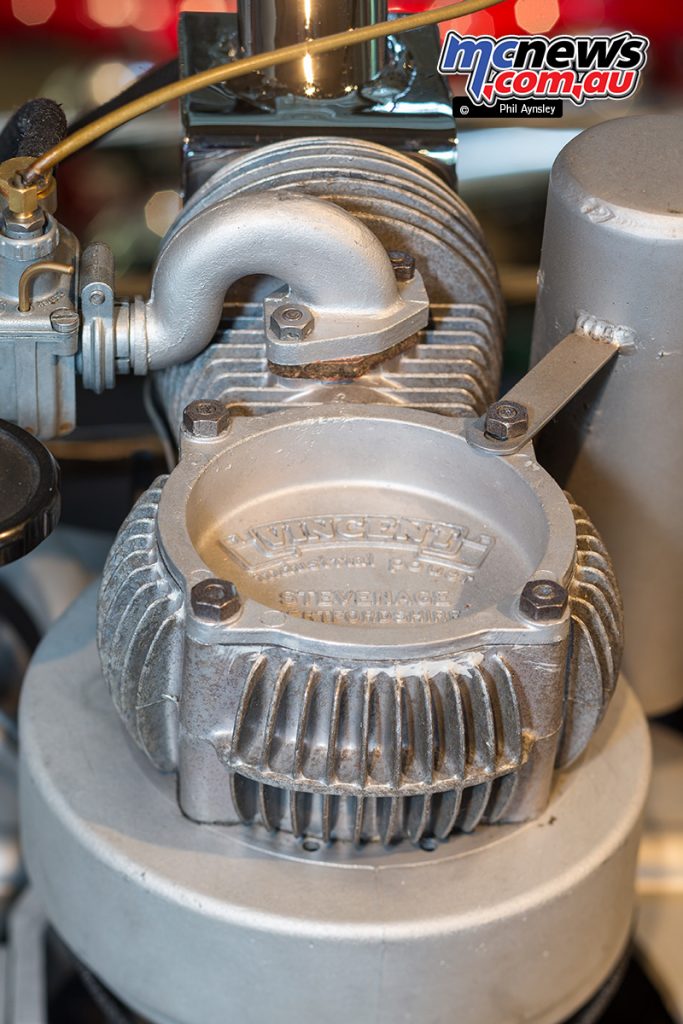
A mid-1950s Farmfitters Rapier lawnmower – powered by a Vincent industrial two-stroke motor, previously owned by John Surtees.

1970 Clymer Indian and 1970 Indian Velocette.
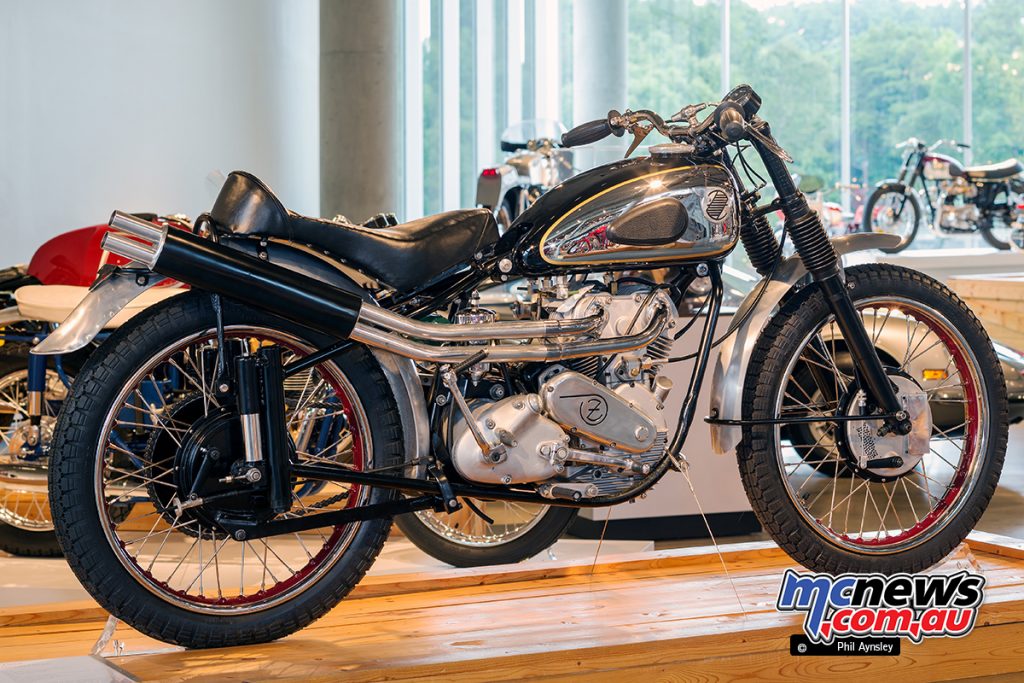
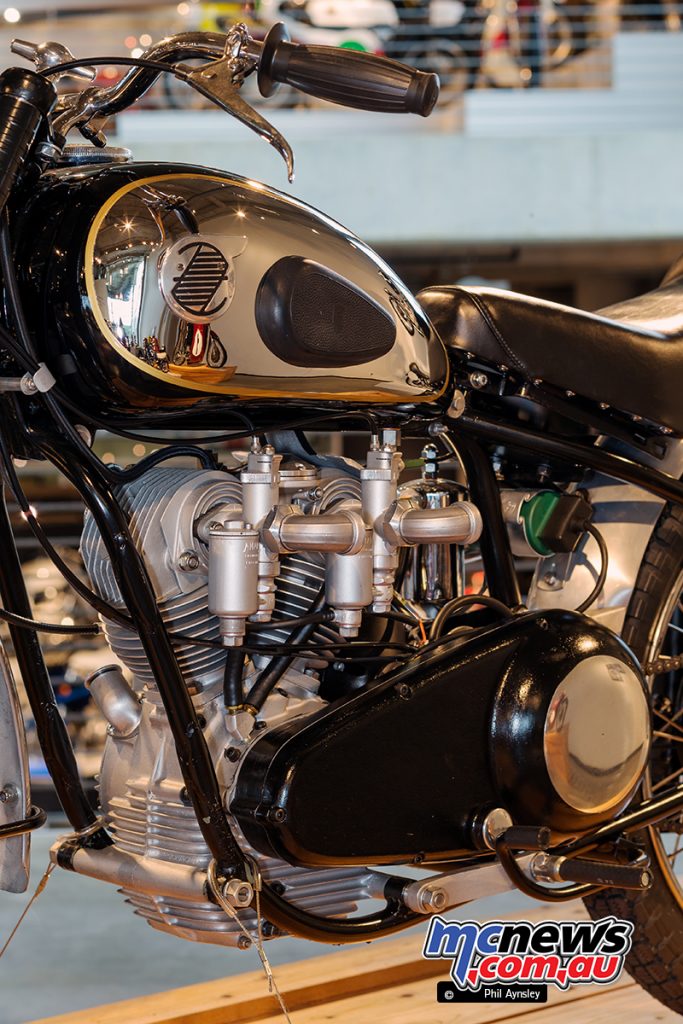
The V-twin engine was designed, cast and machined by model builder Emil Zimmerman. It featured a ported, gear-driven rotary sleeve valve system. A modified Zundapp chassis was used. It was ridden competitively in the Jack Pine Enduro. This is the only example thought to exist. Dry weight was 140kg and top speed 152km/h.
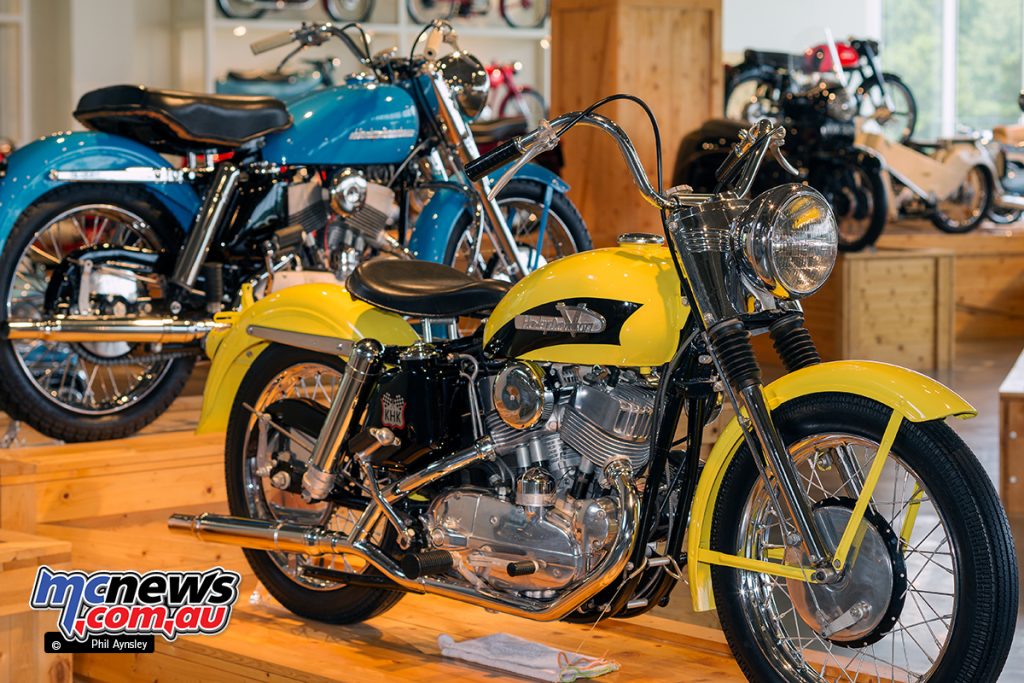
Front to rear: 1955 Harley Davidson KHK. 1952 Harley Davidson Model K Sport.
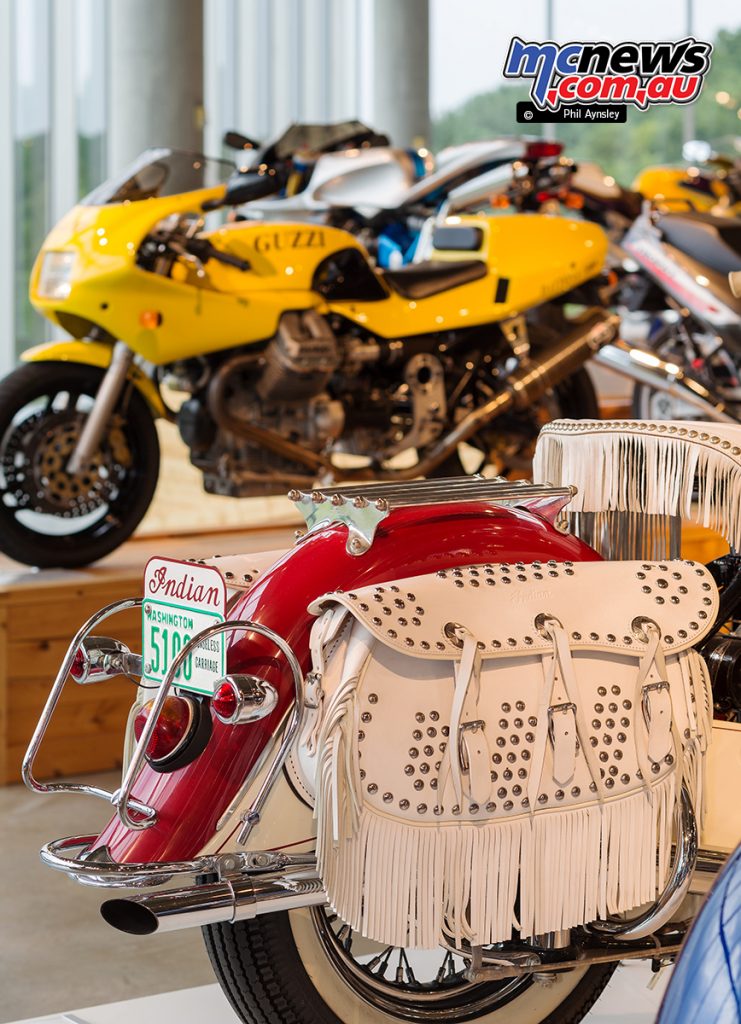
1950 Indian Chief ‘bagger’ panniers.

In 1909 Pierce Four became the first four cylinder motorcycle made in the US. Headed by the son of the Pierce car company, the Pierce Cycle Company’s Four was derived from the Belgian F.N., one of which Percy Pierce brought back from Europe.

However the 688cc engine was improved with a side-valve T head which made a top speed of 100km/h possible. The substantial 3.5 inch tube frame housed both fuel and oil. This 1910 model used a two-speed transmission as opposed to the early model’s single speed.
Final drive was by shaft, the extremely high initial selling price of $325, which was later raised to $400, wasn’t enough to cover the high cost of manufacture and the company folded in 1914. Less than 15 Fours are known to have survived.
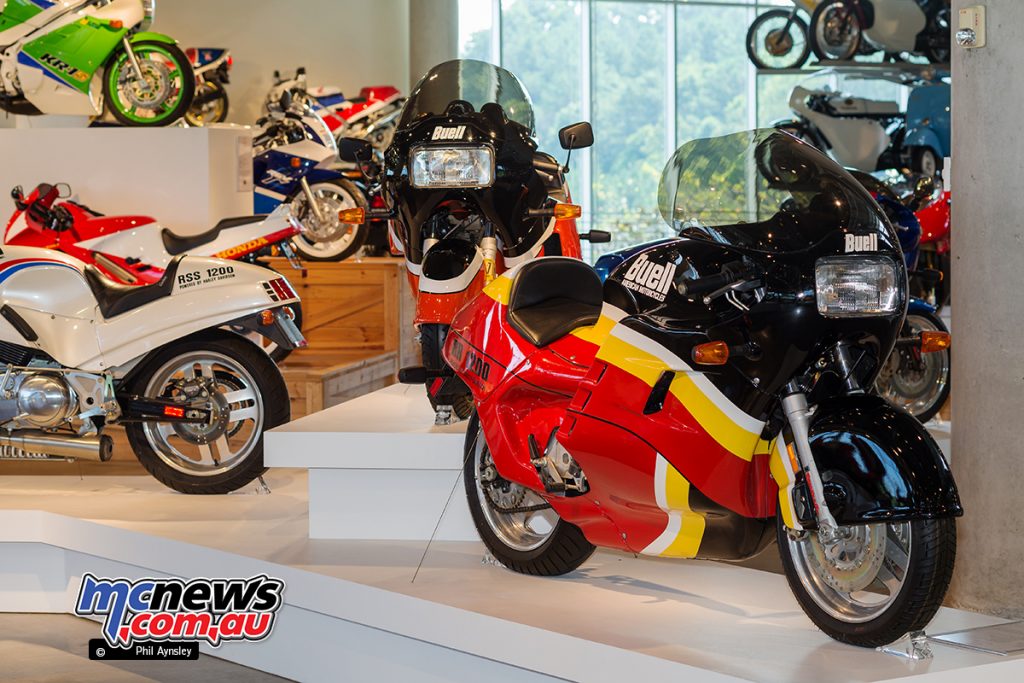
Left to right: 1992 Buell RSS 1200 Westwind. 1986 Buell RR 1000. 1988 Buell RR 1200.
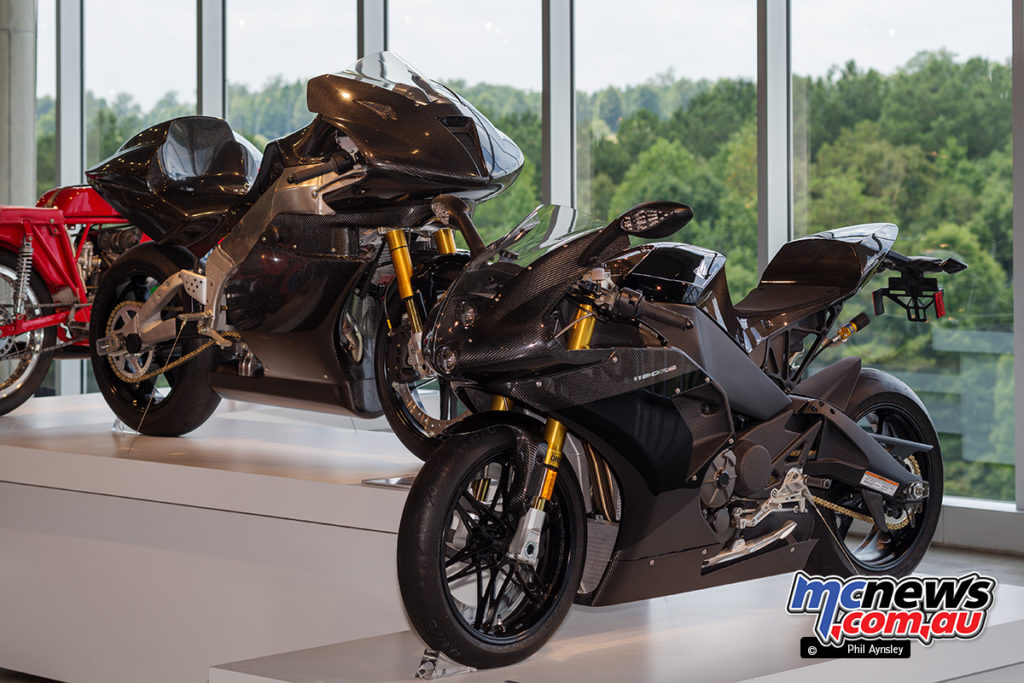
2007 Buell XB RR and 2012 EBR 1190RS.
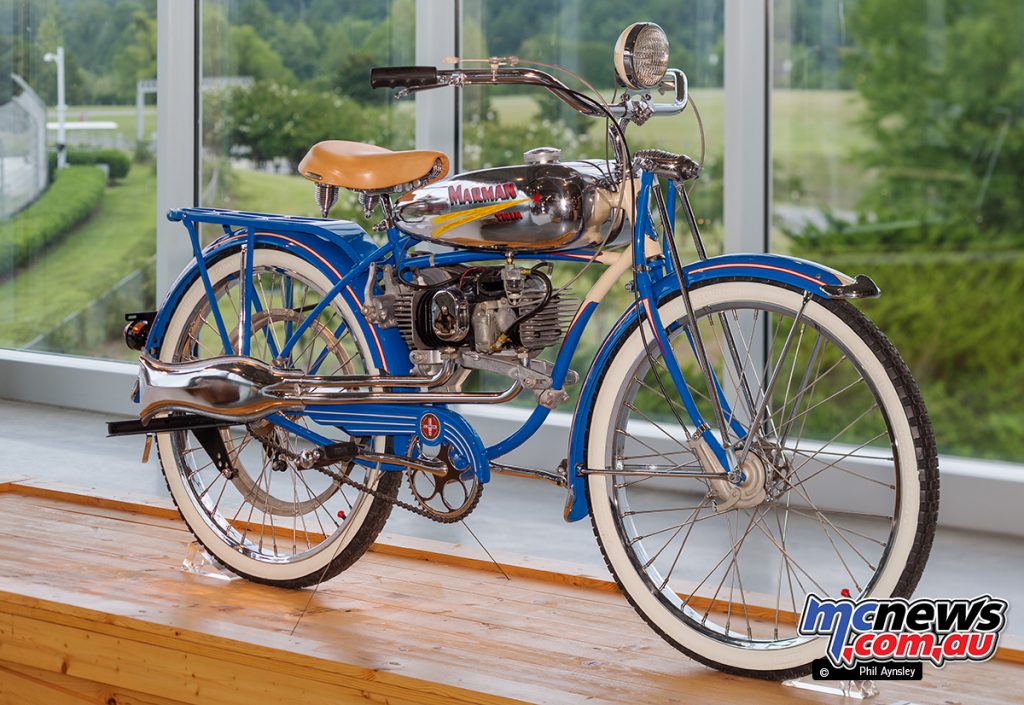
Marman Products Co. was founded in 1948 by Herbert “Zeppo” Marx, the youngest of the Marx brothers. After appearing in the first five Marx brothers movies he went on to become a talented engineer, designing among other things the “Marman clamps” used to hold the ‘Fat Man’ atomic bomb inside the B29 aircraft.
The clamps are used to this day in aircraft fuel systems and spaceflight systems. In 1948 he added surplus engines from WWII drones to Schwinn bicycles (including a clutch) to provide this lively ride.
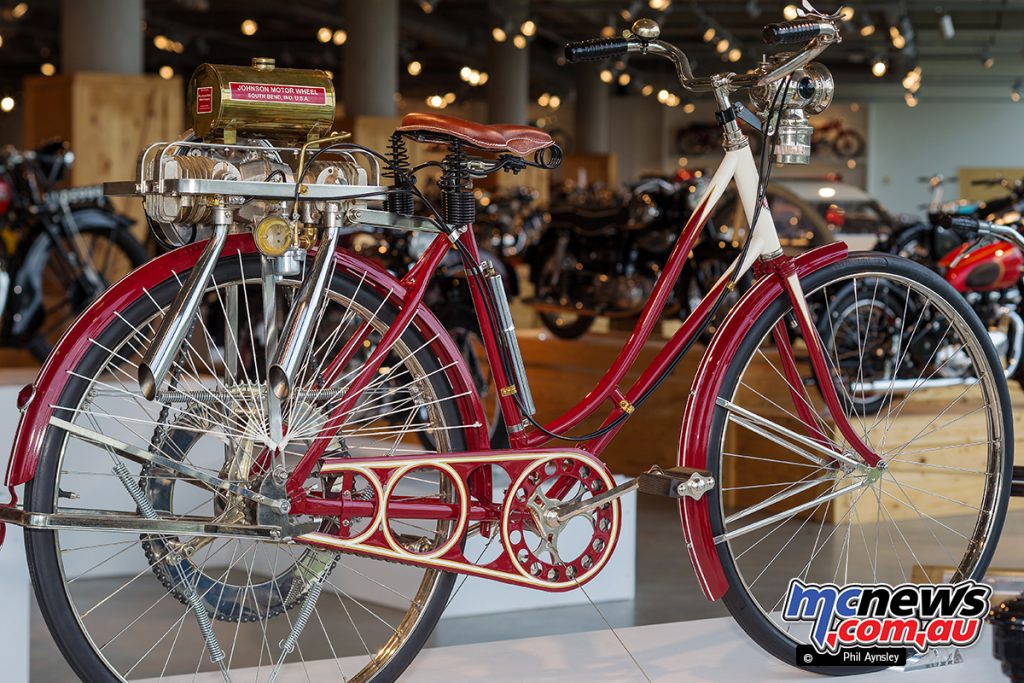
1919 Johnson Motor Wheel. While there were numerous “clip-on” motors and motor wheels developed in the early part of the 20th century, not many used a twin cylinder engine!
This 1919 Johnson Motor Wheel could be attached to any 26 inch bicycle and included all the parts, fittings and cables including the innovative sprocket hub which incorporated a shock absorber.
The horizontally opposed 154cc two-stroke twin made 3-4hp which enabled a top speed of 50km/h and over 17,000 were built.
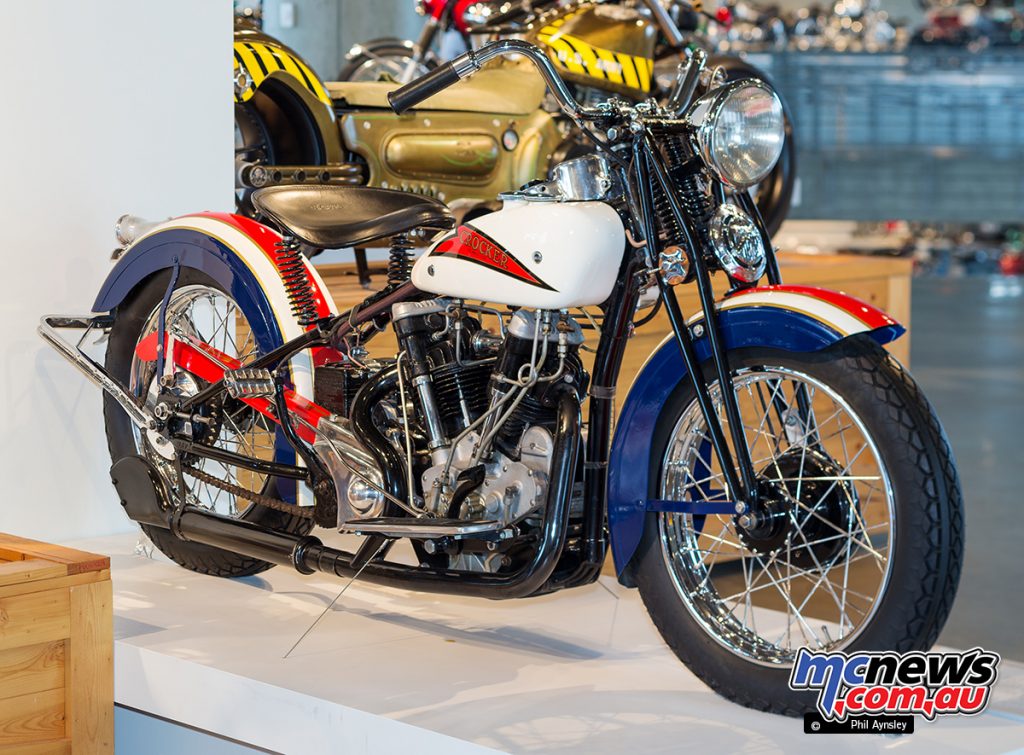
1938 Crocker.

1940 Indian Four.
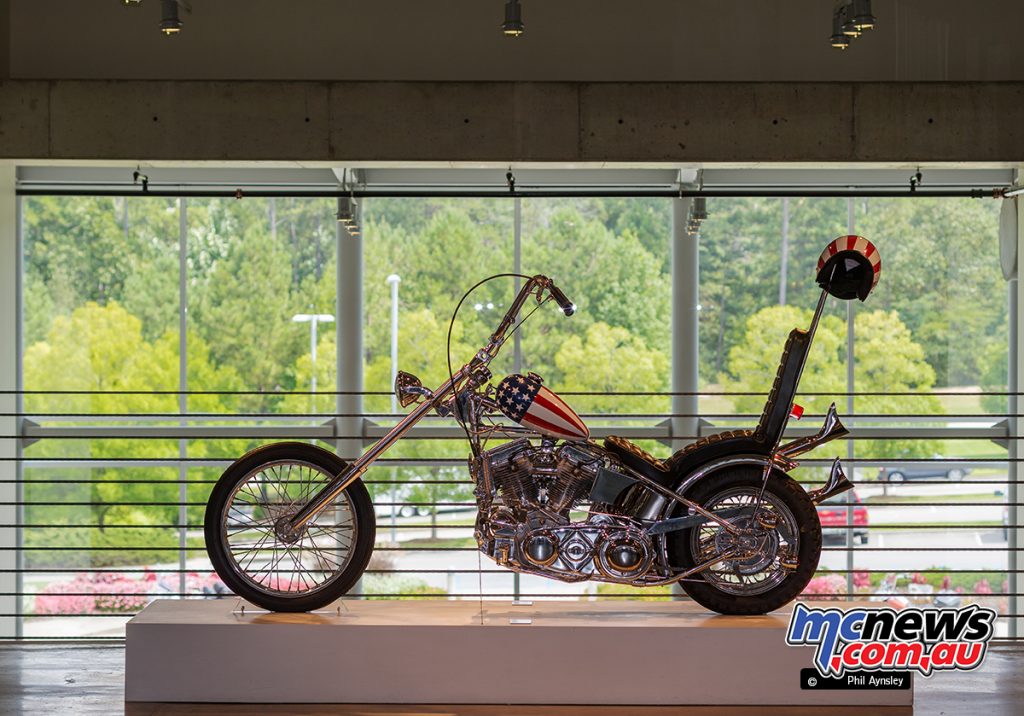
1969 “Captain America” Harley-Davidson chopper replica.

2007 “Shop Rat” custom.























